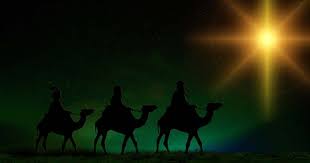
Brought to you by WBIW News and Network Indiana
Last updated on Friday, December 14, 2018
(MUNCIE) - Over the years many people have tried to explain the appearance of the Star of Bethlehem, as described in the Bible in the book of Matthew.
Can the star be explained as an exploding star, a comet or some other natural event in the sky?
One of the classic images of the Christmas holiday is that of three wise men or kings traveling to Bethlehem, over which hangs a brilliant star. The Star of Bethlehem has its roots in the opening verses of the Gospel of Matthew, which states:
"Now when Jesus was born in Bethlehem of Judaea in the days of Herod the king, behold, there came wise men from the east to Jerusalem, Saying, Where is he that is born King of the Jews? for we have seen his star in the east, and are come to worship him."
The wise men, or magi in the original Greek, are often represented as kings, but in context were likely astrologers.

According to Matthew, they saw some astronomical event as a foretelling of Christ's birth. Matthew's account raises the question of what exactly the Star of Bethlehem could have been.
Astronomy Professor at Ball State Ron Kaitchuck, says according to the Bible the "star" may have appeared significant to only a few people.

He believes the star may have been a series of celestial events. As seen in the night sky in the years of 7 and 6 BCE there were close groupings of the planets Mars, Jupiter, and Saturn in a constellation astrologically significant to the Jewish people. This was followed by the appearance of an exploding star in the pre-dawn sky of 5 BCE.
Stars are fixed and unchanging, and astrology of the time didn't focus on the stars themselves. Instead, it focused on astronomical events, such as the last appearance of a particular star before sunrise, or the conjunctions of stars and planets. One clue is buried in the verse itself, where "in the east" could also be interpreted as "at the rising." This could be a heliacal rising, where a constellation or planet appears in the sky just before sunrise. For example, the first appearance of Venus as the morning star.
"Only people who knew the skies and the prophecies well would have seen signs to these events," says Kaitchuck, who directs the Charles W. Brown Planetarium at Ball State and heads the annual Christmas Star program. "It was not something that was exceptionally obvious. Instead, it was a message that could only be read by those who were observant and informed. Today these events can be recreated in a planetarium for all to see."
1340 AM WBIW welcomes comments and suggestions by calling 812.277.1340 during normal business hours or by email at comments@wbiw.com
© Ad-Venture Media, Inc. All Rights Reserved.